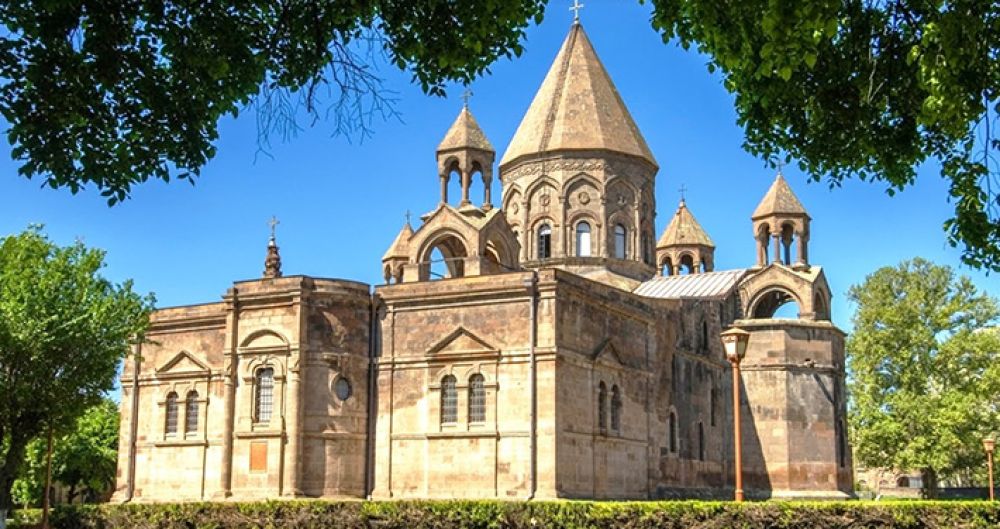

The Mother See of Holy Etchmiadzin, also known as Etchmiadzin Cathedral, is one of the most significant landmarks in Armenia and a cornerstone for the religious life of the Armenian Apostolic Church. Founded in the early 4th century and considered one of the oldest cathedrals in the world, Etchmiadzin Cathedral is located in the city of Vagharshapat, commonly known as Echmiadzin, which translates to "the Descent of the Only-Begotten," referring to Jesus Christ.
St. Gregory the Illuminator, traditionally credited with converting Armenia to Christianity, is believed to have initiated the cathedral's construction in 301 AD. According to the legend, St. Gregory had a vision of Jesus Christ descending from heaven and striking the earth with a golden hammer to mark the location where the cathedral should be built. This historic edifice has undergone numerous renovations and reconstructions due to damages caused by earthquakes and invasions throughout the centuries, preserving its importance and its legacy.
Etchmiadzin Cathedral and the surrounding churches were declared a UNESCO World Heritage Site in 2000, which bolstered its profile as a tourist destination. Visitors from around the world travel to this sacred place to witness the beauty of its architecture, the treasures it houses, and to participate in the liturgical life that has continued uninterrupted for centuries.
The cathedral complex includes the main cathedral, the spiritual and administrative headquarters of the Armenian Apostolic Church (the Mother See), the Gevorkian Theological Seminary, and a museum. As the birthplace of the world’s oldest national church, the Armenian Apostolic Church, it annually attracts thousands of pilgrims and tourists, especially during significant religious celebrations like Easter and Christmas, as well as on the feast of St. Gregory the Illuminator.
In recent years, the Republic of Armenia has been focusing on improving infrastructure and services to stimulate tourism growth. Preservation efforts for historic sites like Etchmiadzin Cathedral are continually promoted, ensuring the legacy of these monuments for future generations. Another trend witnessed is the rise of spiritual and cultural tourism, with travelers seeking authentic experiences that combine historical insights with a deeper understanding of local customs and spiritual traditions.
Visitors to Etchmiadzin Cathedral can explore its impressive collection of religious artifacts, including relics, ancient manuscripts, and vestments. The cathedral complex also hosts choral performances, showcasing the unique sounds of Armenian liturgical music. As tourism evolves, Etchmiadzin continues to adapt, offering guided tours and educational programs that enrich the visitor experience.
The Mother See of Holy Etchmiadzin remains an enduring testament to Armenia's rich heritage and spiritual depth. Its history and significance, both to the Armenian people and to early Christian history, underscore the unique place it holds in the annals of global religious sites and as a beacon for tourists and faithful pilgrims alike.